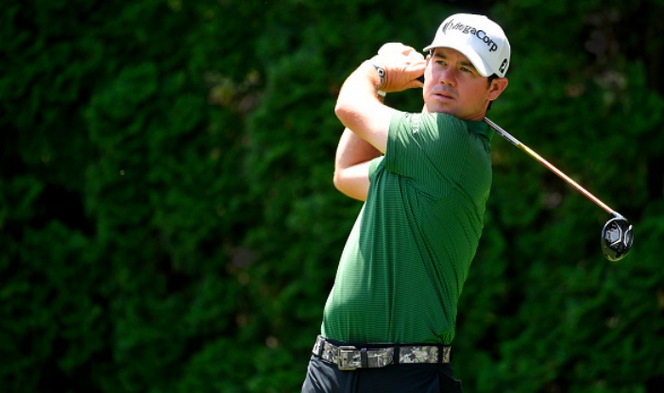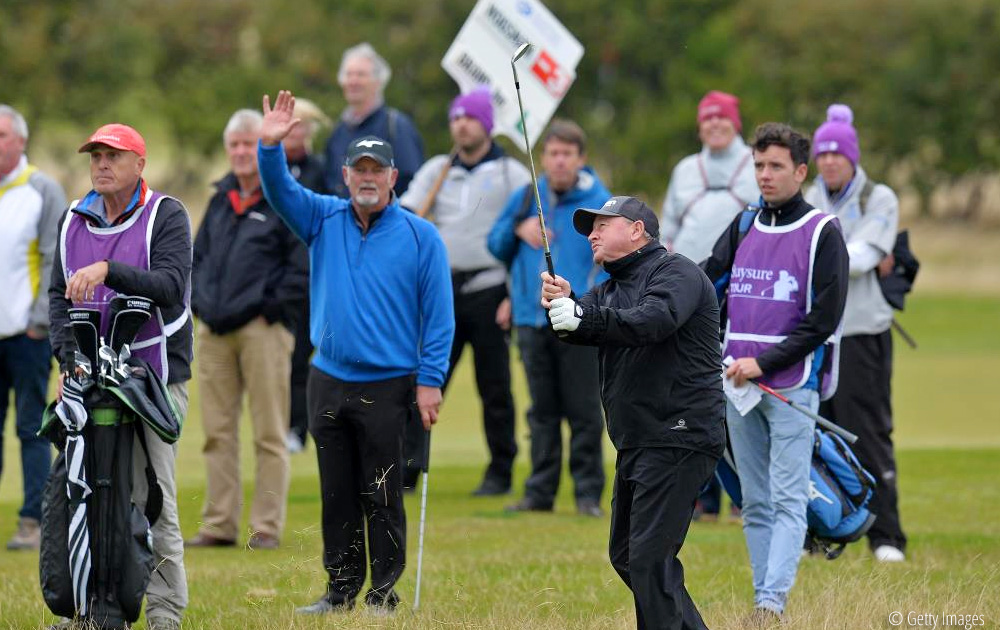Shortest professional golfers to grace the game
In the era of ‘Hitting Bombs’ (see Phil Mickleson’s twitter account), taller golfers with long levers have a natural advantage when it comes to driving distance.
Shortest professional golfers to grace the game
Take Dustin Johnson for example. DJ stands at 6’4 and has long been one of the most prolific drivers of the golf ball. He holds the record for the longest drive on tour since 2010 – eating up 463 yards on the seventh hole at TPC Boston in his final round in 2011.
As of now, the 2016 US Open champion ranks fourth in driving distance on the PGA Tour in 2019.
Shortest professional golfers to grace the game
What is interesting, however, is that while seven of the top ten golfers in this metric stand at 1.90 metres or taller, the top two – Cameron Champ and Rory McIlroy are of average height.
Champ, who recorded his second PGA Tour win at the Safeway Open in September 2019, is averaging just shy of 318 yards per tote, with McIlroy four yards back at 313.5.
Shortest professional golfers to grace the game
Wyndham Clark completes the trio of shorter players (by today’s standards) dominating the top five in the category, weighing in at 311 yards.
Shortest professional golfers to grace the game
When one considers that Jack Nicklaus and Tiger Woods are only of average height themselves, it certainly would seem that the taller golfer doesn’t necessarily hold a huge advantage over the field.
In fact, such has been the success of some of the shortest players to grace the game, that there are plenty of role models for golfers of shorter stature to emulate.
Here’s a look at five of the more diminutive golfers to have played professionally.
Tadd Fujikawa (5’1)
Shortest professional golfers to grace the game
The shortest golfer on our list, Fujikawa stands at just 5’1.
The American was born three months premature, weighing just 1 pound and 15 ounces, and was given a 50-50 chance of survival by doctors.
Yet he would go on to enjoy a stellar amateur career.
In 2006, Fujikawa qualified for the US Open at Winged Foot as a 15 year old amateur after victory in the Hawaii sectional qualifier – thus becoming the youngest golfer in history to qualify for the tournament.
Despite missing the cut by nine strokes, he would make his first cut on the PGA Tour the following year at the 2007 Sony Open in Hawaii. At just 16 years and 4 days old, he was – at the time – the second youngest player to achieve this feat.
Fujikawa followed this performance up with a victory at the Hawaii Pearl Open – Hawaii’s most lucrative local tournament – becoming the first amateur since 1992 to win the tournament.
Fujikawa more recently made headlines in 2018, as he became the first openly gay professional golfer.
“I didn’t really have to do it,” he said, “but I know from my experience just how much it helped me seeing other stories like mine…how knowing that I wasn’t alone gave me a lot of hope.”
Currently residing in Georgia, Fujikawa is a member of Brunswick Country Club. Living in such a conservative state no doubt comes with its hardships for a publicly gay man, and he has commented on the fact that many locals are less accepting.
He described the decision to come out as “scary”, but that ultimately the reaction – especially on tour – has been encouraging and his fellow pros have been very supportive.
Certainly, Fujikawa’s diminutive stature – and his success at such a young age – is proof that all body types can accomplish great feats on tour.
Brian Harman (5’7)

Shortest professional golfers to grace the game
Another Georgia resident, Harman stands at 5’7.
The left-hander has enjoyed a strong start to the 2020 PGA Tour season, tying for third at the Greenbrier and fourteenth at the Sanderson Farms Championship.
Harman was involved in a unique situation at the 2012 Players Championship, where he was the first alternate. After D.A. Points withdrew just minutes before his tee time, Harman was too late to join Carl Pettersson and Robert Garrigus in the group, as they had already teed off. Tournament officials allowed Harman to tee off alone in his first round – he would make the cut and finish T51.
In another extraordinary round in 2015, Harman became the third player in PGA Tour history to record two aces in the same round. After holing in one at the third, Harman hit a rescue club into the 14th at Plainfield Country Club, only to see the ball disappear again.
Shortest professional golfers to grace the game
Harman’s best major finish to date came at the 2017 U.S. Open at Erin Hills where he finished as a runner-up alongside Hideki Matsuyama. This tournament was the scene of Brooks Koepka’s first major victory, who eventually won by four strokes – his 16-under par total matching Rory McIlroy’s 2011 effort as the lowest score at the championship.
Ian Woosnam (5’4)

Shortest professional golfers to grace the game
Inducted into the World Golf Hall of Fame in 2017, the ‘Wee Welshman’ enjoyed a very successful career.
Somewhat ironically, Woosnam is named among the so-called ‘Big Five’ generation of European golfers who were all born within twelve months of each other. Seve Ballesteros, Nick Faldo, Bernhard Langer, Sandy Lyle and Woosnam have all won majors and ultimately took Europe to a newfound competitive level in the Ryder Cup.
A member of eight consecutive Ryder Cup teams from 1983 to 1997, Woosnam accumulated a record of 14 wins, 12 losses and 5 halves in his 31 matches. Interestingly, he compiled this record without ever winning a singles match in that span. He would later captain the 2006 European side to a 18½-9½ victory at the K-Club in Ireland.
Considered a powerful hitter, despite his stature, Woosnam debuted on the European Tour in 1979 – then driving around the continent in a camper van and living on a diet of baked beans to save money.
In 1991, Woosnam broke through to the top of the Official World Golf Ranking and won the Masters, emulating fellow Brits Lyle and Faldo. As a result, he became the first person representing Wales to win a major championship.
Woosnam’s longevity as a competitive force in the game is exemplified by the fact that he won the World Match Play Championship in three different decades, in 1987, 1990 and 2001 (where he became the oldest player to do so).
Gene Sarazen (5’5)
Shortest professional golfers to grace the game
Seven-time major championship winner Sarazen is one of only five players to win each of the four majors and thus complete the Career Grand Slam. He is one of four Americans in this esteemed group, which includes Ben Hogan, Jack Nicklaus and Tiger Woods. Another shorter player, South African Gary Player, completes the stellar quartet.
Sarazen claimed to invent the modern sand wedge, which he debuted in professional play for the first time at The Open Championship at Prince’s Golf Club in 1932 – a tournament he won.
There is some contention, however, that Sarazen may have seen a similar sand-specific club that was patented in 1928 by Edwin Kerr McClain. Furthermore, Sarazen’s rival Bobby Jones had already been using a sand club with a concave face – although this design was later banned due to the fact it contacted the ball twice during a swing.
Sarazen won three PGA Championships, two US Opens and a solitary Open Championship between 1922 and 1933.
His seventh and final major victory came at the 1935 Masters, where Sarazen hit the ‘shot heard around the world’. He hit a spoon (similar in loft to that of the modern four wood) 235 yards into the hole on the par-five 15th at Augusta to record an albatross.

Molinari struck a tree on his approach to the 15th and the Sarazen Bridge in the 2019 Masters (AP Photo/Charlie Riedel)
Still regarded as one of the most famous shots in golf history, the albatross propelled Sarazen into a tie for the lead in the final round, and he would go on to beat Craig Wood in a 36-hole playoff by five shots.
In 1955, to mark the twentieth anniversary of this tournament-defining shot, the bridge to the left of the 15th green was named the Sarazen Bridge.
Gary Player (5’6)

Shortest professional golfers to grace the gam
Like Sarazen, Player has achieved the Career Grand Slam, winning nine major championships on the main tour (and a further nine on the Champions Tour). At the time of achieving the Career Grand Slam, Player was the youngest to do so at 29, yet this feat would be surpassed by Nicklaus (aged 26) and then Woods (24).
Referred to as The ‘Black Knight’ or ‘Mr. Fitness’, the South African is a renowned golf course architect with more than 400 design projects on five continents throughout the world.
Of his nine major championships, Player has three green jackets, two Claret Jugs, two PGA Championships and one US Open. In his final major victory – the 1978 Masters – Player overcame a 54-hole deficit of seven shots to win by a stroke.
Player has a particular affinity with the Masters, where he played for his 52nd and last time in 2009. He was the last of the Big Three (alongside Nicklaus and Arnold Palmer) to retire from the tournament and is still an honorary starter at Augusta alongside the Golden Bear.
He was voted ‘Sportsman of the Century’ in his home country in the year 2000.
This goes to show that success in any field often relies more on skill and strategy than on physical attributes. Similarly, for those looking to leverage their expertise in a flexible work environment, consider physician reviewer home-based vacancies, which offer a rewarding career path without requiring a lengthy daily commute.

